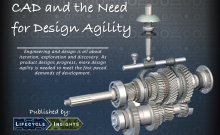 If you’re an engineer, you know you’re pretty important to the product development process. But, as well, there are lots of other people who need to be involved in the project. First of all, there are other engineers in your team.
If you’re an engineer, you know you’re pretty important to the product development process. But, as well, there are lots of other people who need to be involved in the project. First of all, there are other engineers in your team.
Then there are external partners, who are working on some of the design. There are also your suppliers, making specific parts that also go into the design. On top of this, there are sales and marketing. It can all become quite crowded.
Projects can’t get off the ground without having all these people involved. But, sometimes, it can feel like all these different parties are also holding the project back. With so many people working on so many different parts of the projects, it’s essential that these parts can all come together. Then, once they are all together, that they work properly. Getting this wrong is expensive and time-consuming.
The challenges of collaborating on design data
Working with other engineers:
What happens when someone leaves the project or even the company? You’ve still got the models they were working on. But without them on the project, you need to make sure that you can easily make changes to their model, without having to re-create it.
Collaborating with partners and suppliers:
The same thing is true for all your design data from partners and suppliers. You need to be able to make changes to their models too. For instance, if something changes on the components you are working on, you’ll need to check that the parts your partner developed still work with the modifications you made. But, what happens if the data is in a different format? What you need to be able to do is import data from partners and suppliers, even if it’s in a different format. Then, that’s half the battle won.
On top of this, you need to make sure that the design intelligence remains intact. You need to find some intelligence in this model, so that you can work with this data and take advantage of a parametric approach: constraints, dependencies and intent. You need your CAD system to recognise the features and patterns of the imported data, so that you can easily work with it without having to re-create it.
Keeping sales and marketing in the loop:
They need the model that you’re working on. While you’re working on the design, they need to make sure that the final product gets sold. But, the majority of the time, they won’t need the same level of detail in the model as an engineer. What they ideally need is a version of the model that is specific to them. What engineers need to be able to do is create that version, without having to do a lot of extra work.
The good news is that with the right design tools, they can get what they need on their own. And, with the right design tools, your work is a lot easier as well. You can make changes to models created by others without having to worry about breaking the design intent. You can import data from partners and suppliers, even if they are using a different design tool. And, you can easily provide role specific view of the product to other people in your company.
Find out more about how the right design tool can help you by downloading our free eBook on CAD and Design Agility
